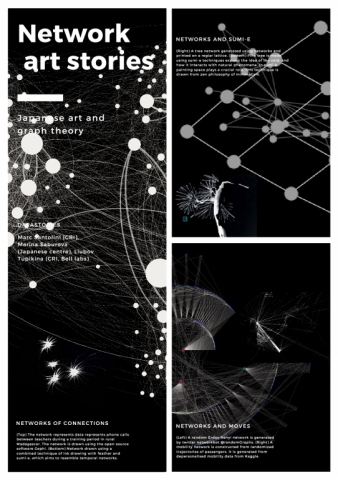Print Visualizations at Data Stories 2025

Author: Mark Santolini
Co-authors: Marina Saburova, Liubov TupikinaJapanese ink painting, “sumi-e”, was developed in Japan in the XIV century. From its very conception, it was characterised by austerity and minimalism and mainly practiced by the monks of the Rinzai sect of Zen. Later, the sumi-e became a secular art and was largely used in the decoration of the traditional houses. There are three essential materials to practice sumi-e: ink, special brush, rice paper. These elements are essential and their combination creates unique paintings.
Working with mathematical objects or data visualisation, one relies on principles very similar to those of sumi-e: simplicity and abstraction. When mathematical ideas are both simple and abstract, they have the power to convey intuitive messages about the nature of things. Abstraction allows to capture complex elements in nature (the movement of a fish, a spider net in the wind), and simplicity of the language then grants an internal understanding of the abstract message of sumi-e or of the mathematical object. In our network-art work, we use various network representations to highlight complex interrelations between objects in nature and their translation in the aesthetics of Japanese paintings.
